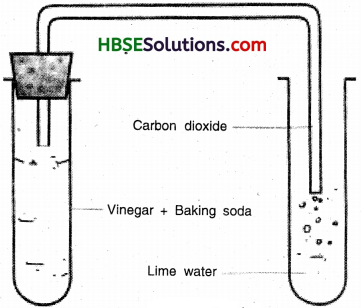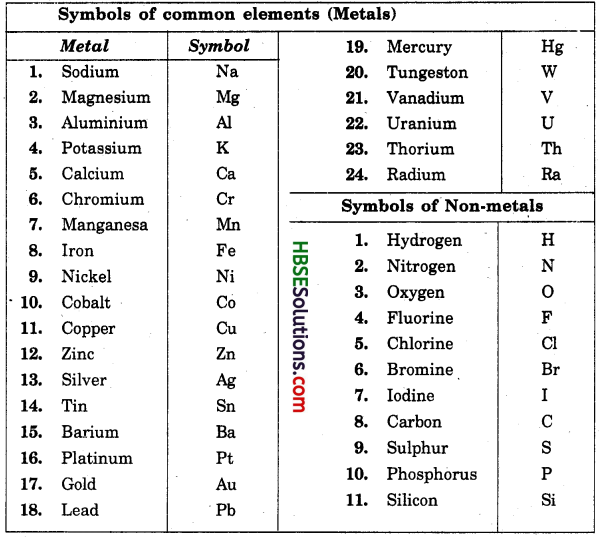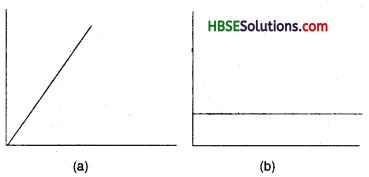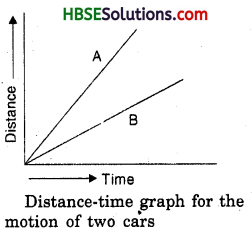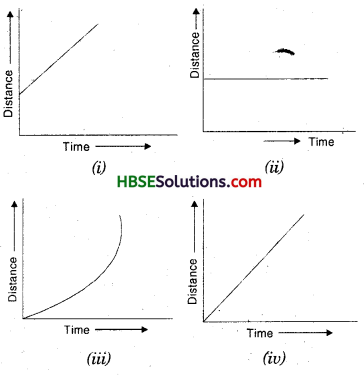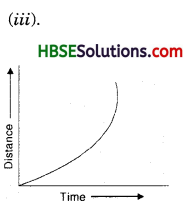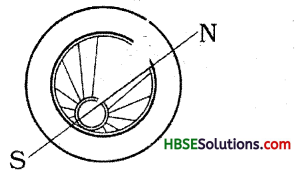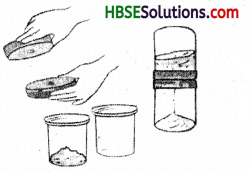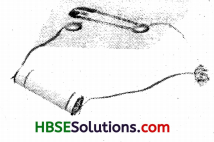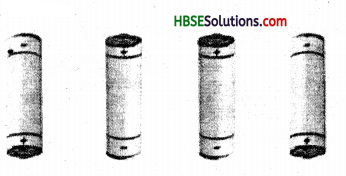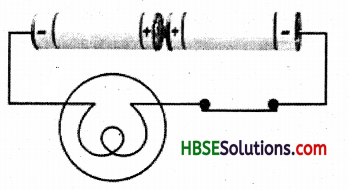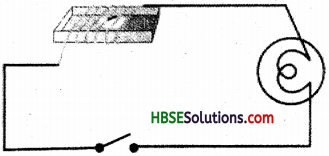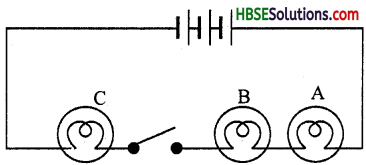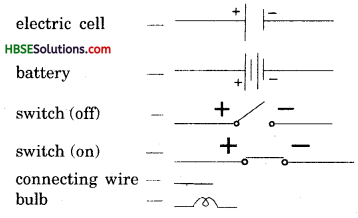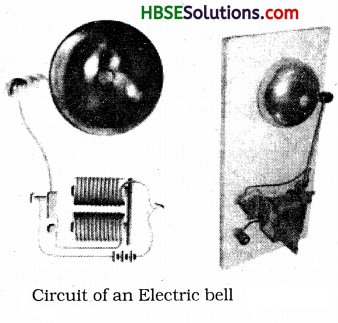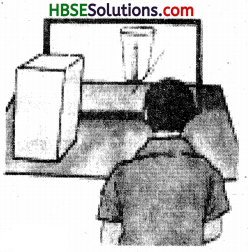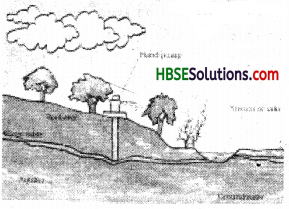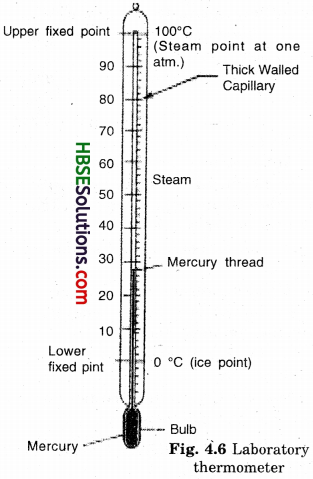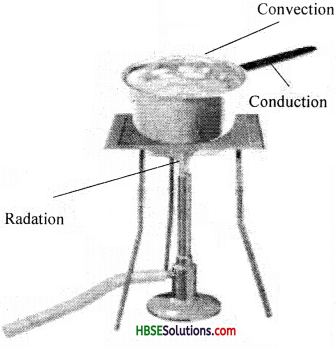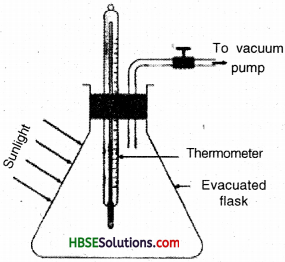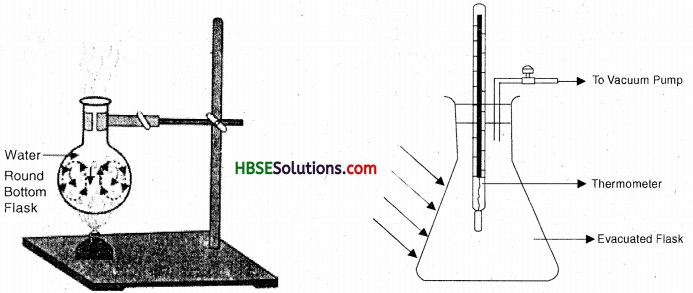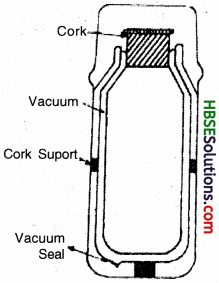HBSE 7th Class Science Solutions Chapter 12 Reproduction in Plants
Haryana State Board HBSE 7th Class Science Solutions Chapter 12 Reproduction in Plants Textbook Exercise Questions and Answers.
Haryana Board 7th Class Science Solutions Chapter 12 Reproduction in Plants
HBSE 7th Class Science Reproduction in Plants Textbook Questions and Answers
Question 1.
Fill in the blanks :
(a) Production of new individuals from the vegetative part of parent is called _________.
(b) A flower may have either male or female reproductive parts. Such a flower is called _________.
(c) The transfer of pollen grains from the anther to the stigma of the same or of another flower of the same kind is known as _________.
(d) The fusion of male and female gametes is termed as _________.
(e) Seed dispersal takes place by means of _________ and _________.
Answer:
(a) vegetative reproduction,
(b) bisexual flower
(c) pollination
(d) fertilization,
(e) wind, water, insects.
Question 2.
Describe the different methods of asexual reproduction. Give examples.
Answer:
Different methods of asexual reproduction are :
(a) Binary fission : This process takes place in unicellular organisms. Parent cell elongates and get divided into two identical daughter cells. Each daughter cell grows into an independent adult, e.g. in case of bacteria.
(b) Endospore formation : In this method a spore wall is formed around a bacterial cell to form an endospore. This endospore germinates to form an active bacterium under favourable conditions.
(c) Fragmentation : This occurs mainly in Algae. Body of the organism breaks up into two parts. Then each part grows into a new filament thus forming two organisms from a single one.
(d) Spore formation : The spores are tiny, spherical unicellular structures protected by a thick wall. The spores are stored in a hard outer covering and this is called sporangia. Under favourable conditions the hard cover breaks and spores spread for germination.
(e) Budding : In yeast, new organisms are produced by the bud formation from the parent organism. After growing to full size, the bud gets detached and form a new independent individual.
(f) Vegetative reproduction : When vegetative part of a plant like stems, leaves and root etc. give rise to new ones, it is called vegetative reproduction.
![]()
Question 3.
Explain what do you understand by sexual reproduction?
Answer:
Sexual reproduction means involvement of two parents in the process of reproduction. It is found mainly in higher plants. Male gamete and female gamete fuse to form a zygote. These zygotes develop into individuals which are not identical. Offspring inherit the characteristics of both the parents. In sexual reproduction both parents survive after the process of reproduction.
Question 4.
State the main differences between asexual and sexual reproduction.
Answer:
| Asexual reproduction | Sexual reproduction |
| (a) Only one parent plant is involved. | (a) Both male and female parent are involved. |
| (b) Occurs in unisexual plants. | (b) Occurs in bisexual plants. |
| (c) Occurs in lower plants. | (c) Occur in higher plants. |
| (d) Reproductive organs are not present. | (d) Fully developed reproductive parts are present. |
| (e) In most of the methods the original parent disappears. | (e) Original parents remain alive after the process of reproduction. |
| (f) Processes like gamete formation or fertilization is not seen. | (f) Fertilization of gametes give rise to zygote. |
| (g) Characteristics of only one parent is inherited. | (g) Characteristics of both parents are inherited. |
| (h) No need of seeds. | (h) Seeds are used to get new plants of a flower. |
Question 5.
Sketch the reproductive parts of a flower.
Answer:
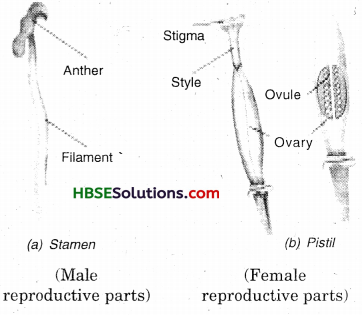
Question 6.
Explain the difference between self-pollination and cross-pollination.
Answer:
| Self-pollination | Cross-pollination |
| (a) Pollen grains are transferred to the stigma of the same flower. | (а) Pollen grains are carried to stigma of another flower from one flower. |
| (b) Occurs in bisexual plants having anther and stigma maturing at same time. | (b) Occurs in bisexual flowers having anther and stigma maturing at different times. |
| (c) It takes place in plants like wheat peas etc. | (c) It takes place in plants like lady finger, tomato, brinjal etc. |
Question 7.
How does the process of fertilization take place in flowers?
Answer:
When the pollen grain reaches the stigma of a same flower, it starts growing out in pollen tube of the stigma. This tube continues to grow inside the style till it reaches the ovule. Male cells are released in the ovule for the fertilization with female cells and thus the zygote is formed. After this process of fertilization, the ovary develops into fruit and ovule into seeds.
Question 8.
Describe the various ways by which seeds are dispersed.
Answer:
Following are the ways in which the seeds get dispersed:
(i) Some light seeds like that of Madar, which are hairy, dry and small are carried away by the wind to different places. Some seeds having winged structure e.g. that of Maple and Drumstick are also dispersed by air.
(ii) Spiny seeds and fruits like that of Xanthium and Gokhru, the seeds stick to the clothes of passers-bye and animals. These seeds are carried away by these agents to different places.
(iii) In some cases having heavy seeds like that of Coconut, water acts as the dispersing agents.
(iv) Some seeds are diprersed when the fruit bursts like in case of Balsam and castor.
![]()
Question 9.
Match the items in Column I with those of Column II :
| Column I | Column II |
| (a) Bud | (i) Maple |
| (b) eyes | (ii) Spirogyra |
| (c) fragmentation | (iii) Yeast |
| (d) Wings | (iv) Bread mould |
| (e) Spores | (v) Potato |
| (vi) Rose |
Answer:
(a) (iii)
(b) (v)
(c) (ii)
(d) (i)
(e) (iv)
Question 10.
Tick (✓) the correct answer :
(a) The reproductive part of a plant is the :
(i) Leaf
(ii) Stem
(iii) Root
(iv) Flower
Answer:
(iv) Flower
(b) The process of fusion of the male and the female gametes is called :
(i) fertilization
(ii) Pollination
(iii) reproduction
(iv) seed formation
Answer:
(i) fertilization
(c) Mature ovary forms the:
(i) Seed
(ii) Stamen
(iii) Pistil
(iv) Fruit
Answer:
(iv) Fruit
(d) A spore producing plant is :
(i) Rose
(ii) Bread mould
(iii) Potato
(iv) Ginger
Answer:
(ii) Bread mould
(e) Bryophyllum can reproduce by its :
(i) Stem
(ii) Leaves
(iii) Roots
(iv) Flower
Answer:
(ii) Leaves
Extended Learning-Activities and Projects
Question 1.
Make your own cactus garden by collecting pieces cut from different kinds of cacti. Grow the variety in one single flat container or in separate pots.
Answer:
Do it yourself.
Question 2.
Visit a fruit market and collect as many local fruits as possible. If many fruits are not available, you can collect tomatoes and cucumbers (these are fruits, though we use them as vegetables). Make drawings of the different fruits. Split the fruits and examine the seeds within. Look for any special characteristics in the fruits and their seeds.
Answer:
Do it yourself.
![]()
Question 3.
Think of ten different fruit-bearing plants. Remember that many vegetables are also fruits of the plants. Discuss with your teacher, parents, farmers, fruit growers and agricultural experts (if available nearby) and find out the manner of their dispersal. Present your data in the form of a table as shown below :
| S. No | Name of fruit bearing plant | Agent through which seeds are dispersed | Part of or seed which helps in dispersal |
| 1. | |||
| 2. | |||
| 3. |
Answer:
Do it yourself.
Question 4.
Suppose there is one member of a particular kind of organism in a culture dish, which doubles itself in one hour through asexual reproduction. Work out the number of members of that kind of organism which will be present in the culture dish after ten hours. Such a colony of individuals arising from one parent is called a “clone”.
Answer:
Do it yourself.
HBSE 7th Class Science Reproduction in Plants Important Questions and Answers
Very Short Answer Type Questions
Question 1.
What do you understand by the term reproduction?
Answer:
Reproduction is the process by which the living organisms produce more of their ownkind.
Question 2.
Name the methods by which plants reproduce.
Answer:
Plants reproduce in two ways :
- Asexual reproduction
- Sexual reproduction.
Question 3.
What is pollination?
Answer:
Pollination is a process in which pollen grains get transferred from anther to the stigma of the‘flower.
Question 4.
Name different methods of asexual reproduction.
Answer:
Various methods of asexual reproduction are :
- Binary fission
- Endospore formation
- Fragmentation
- spore formation
- Budding
- Vegetative reproduction.
Question 5.
What do you mean by the term fertilization?
Answer:
Fertilization is a process in which fusion of male and female gametes takes place to produce the zygote.
Question 6.
What is vegetative reproduction?
Answer:
It is the simplest method of reproduction in plants. In this method the vegetative parts like stem, roots and leaves produce new ones.
![]()
Question 7.
What is the advantage of the vegetative reproduction?
Answer:
The vegetative reproduction occurs very fast and easily. So quick reproduction is possible.
Question 8.
What is difference between unisexual and bisexual flowers?
Answer:
Unisexual flower has either a male or female reproductive part and bisexual flower has both of them.
Question 9.
Write any one advantage of seed dispersal.
Answer:
It prevents the plants from competing for sunlight, water and minerals.
Question 10.
Where are the male and female gametes found?
Answer:
The male gametes are found inside the pollen grains and the ovule contains the female gametes.
Short Answer Type Questions
Question 1.
What is reproduction? Name various methods of reproduction in plants.
Answer:
Reproduction is the process by which the living organisms produce more of their ownkind. Plants reproduce by two methods asexual and sexual. Asexual reproduction means the birth of new ones by single parent only. Sexual reproductions means involvement of two parents in the process.
Question 2.
List the different methods of asexual reproduction. In which type of plants does asexual reproduction occur?
Answer:
Asexual reproduction occurs in lower form of plants, where they do not have any reproductive part. It occurs through following methods.
- Binary fission
- Budding
- Endospore formation
- Spore formation
- Fragmentation
- Vegetative reproduction.
Question 3.
What is pollination? How is it brought about?
Answer:
The transfer of pollen grains from anther to stigma of a flower is called pollination. Pollination is brought about by many agents like water, air, animals and insects. Pollen grains are carried by these agents from anther of one flower to the stigma of another flower of same kind.
Question 4.
What do you mean by cross-pollination and self-pollination?
Answer:
Transfer of pollens occur in two ways. When pollen grains ate transferred to stigma of the same flower, it is called self pollination. When transfer of pollen grains take place from anther of one flower to the stigma of another flower of same kind, it is called cross pollination.
![]()
Question 5.
Write a short note on vegetative propagation.
Answer:
Vegetative reproduction! means the birth of new ones from the vegetative parts of the plant like leaves, stem, roots and buds. This is an asexual type of reproduction. Eyes on potato, buds sprouting on the leaves of bryophyllum, new plant growing out of cactus’ stem etc are examples of vegetative reproduction.
Question 6.
Write atleast three advantages of vegetative propagation methods.
Answer:
Following are the advantages of vegetative propagation:
- It is a fast method of reproduction.
- Plants produced by vegetative propagation have same features as that of parent plant.
- Plants produced by vegetative reproduction bear flowers and fruits earlier than the plants grown out of seeds.
Long Answer Type Questions
Question 1.
What is Asexual reproduction? Explain various methods of asexual reproduction.
Answer:
Asexual reproduction means obtaining new plants from one parent without seeds. Various methods of asexual reproduction are as follows :
Different methods of asexual reproduction are :
(a) Binary fission : This process takes place in unicellular organisms. Parent cell elongates and get divided into two identical daughter cells. Each daughter cell grows into an independent adult, e.g. in case of bacteria.
(b) Endospore formation : In this method a spore wall is formed around a bacterial cell to form an endospore. This endospore germinates to form an active bacterium under favourable conditions.
(c) Fragmentation : This occurs mainly in Algae. Body of the organism breaks up into two parts. Then each part grows into a new filament thus forming two organisms from a single one.
(d) Spore formation : The spores are tiny, spherical unicellular structures protected by a thick wall. The spores are stored in a hard outer covering and this is called sporangia. Under favourable conditions the hard cover breaks and spores spread for germination.
(e) Budding : In yeast, new organisms are produced by the bud formation from the parent organism. After growing to full size, the bud gets detached and form a new independent individual.
(f) Vegetative reproduction : When vegetative part of a plant like stems, leaves and root etc. give rise to new ones, it is called vegetative reproduction.
Question 2.
What is vegetative reproduction ? Describe vegetative reproduction in different parts of the plant.
Answer:
Vegetative reproduction means growing of off springs from the vegetative parts of the plant like roots, stems, and leaves.
(i) Vegetative propagation by roots : Thick roots of sweet potato, dahlia or asparagus give rise to new ones, inside the soil only.
(ii) Vegetative propagation by stems : In certain plants like potato, ginger, sugarcane etc, new plants grow from the stems of these plants. In potatoes these are small ‘eyes’ on the swollen stem. These eyes germinate to give rise to new plants. Ginger and turmeric also give rise to new plants rom the small buds growing on their swollen stems.
(iii) Vegetative reproduction by leaves : In plants like Bryophyllum Small plantlets grow from the margins of the leaves. These plantlets when detached from the leaf and grown develops into an independent plant.
Question 3.
Explain Sexual Reproduction in plants.
Answer:
Sexual reproduction occurs in plants having well developed reproductive parts in them. Flowers are the reproductive parts of the plant. Flowers can be unisexual i.e. having only male or female reproductive parts, and Bisexual i.e. having both male and female reproductive parts.
Female reproductive part of the flower i.e. the pistil form female ovules and male reproductive parts i.e. Androecium give rise to male gametes. When male and female gametes fuse in the ovary of the flower the process of fertilisation takes place. Male gametes are carried to the female flowers far away by agents like wind, water, insects and animals. This is called pollination. After fertilization the ovary of the flower becomes pulpy and juicy to form fruits. The ovules become the seeds.
![]()
Reproduction in Plants Class 7 HBSE Notes
- Reproduction is the process by which all the living organisms produce more of their own kind.
- The reproduction in plants occur by two methods : asexual reproduction and sexual reproduction.
- Asexual reproduction is reproduction without seeds involving only single parent.
- Asexual reproduction occurs in lower forms of the plants.
- Various methods of asexual reproduction are : Binary fission, fragmentation, Endospore formation, spore formation, Budding and vegetative reproduction.
- Binary fission is division of elongated parent cell into two daughter cell. It mostly occurs in bacteria. Some bacteria reproduce by endospore formation.
- Fragmentation is splitting up of filaments of algae in two or more than two parts, which develop into complete organism.
- Spores are formed in fungi, spores along with outer hard covering are called sporangium. Sporangium burst to release spores.
- Bud is a small bulb like projection, which comes out of yeast cell. It grows and detach from the parent cell to form a new yeast cell.
- Vegetative propagation is the birth of new ones from the vegatative parts of the plant like leaves, roots, stems etc.
- Sexual reproduction is the reproduction by seeds involving both male and female plants.
- Male and female gametes fuse to form zygote which grows into a developed new plant.
- Ovaries of the plant develop into fruit after fertilization and ovules becomes seeds.
- Male pollen grains are transferred from one flower to another and this is called pollination.
- When pollen grain of same flower are transferred from anther to stigma of same flower, it is called self-pollination.
- When pollens of a flower are transferred to stigma of another flower of same kind, it is called cross-pollination.
HBSE 7th Class Science Solutions Chapter 12 Reproduction in Plants Read More »
